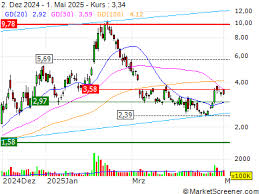Walmart Stock: Recent Trends and Market Performance

Introduction
Walmart Inc. is one of the largest retail corporations globally, with significant influence on the stock market. Its performance is closely watched by investors and analysts alike due to the company’s size and impact on the economy. Understanding Walmart’s stock trends is essential for those interested in retail sector investments and economic indicators.
Current Market Performance
As of October 2023, Walmart’s stock (NYSE: WMT) has seen fluctuations widely attributed to shifting consumer behavior and economic conditions. Following a strong year in 2022, where the company capitalized on e-commerce growth, Walmart’s stock experienced some volatility in 2023 as inflation and interest rates affected consumer spending habits.
In the first half of 2023, Walmart stock showed resilience, with prices maintaining upward momentum. However, analysts noted a slight decrease over the summer months, attributed to broader market concerns regarding economic slowdown and rising costs. As of the latest reports, Walmart shares are trading near $150, marking a small decrease over the past quarter but an increase compared to year-ago levels.
Factors Influencing Walmart Stock
Several factors influence Walmart’s stock performance, including:
- Consumer Spending: Economic conditions, such as inflation and unemployment rates, directly affect consumer discretionary spending, impacting Walmart’s revenue.
- E-commerce Growth: Walmart has invested heavily in its online presence, and continued growth in this area is crucial for maintaining competitive advantage.
- Supply Chain Challenges: Ongoing disruptions and costs in global supply chains can impact product availability and operational costs for Walmart, affecting its profitability.
Future Outlook
Looking ahead, experts predict that Walmart’s stock will continue to be driven by its adaptation to changing market conditions. The company’s initiatives, such as its investment in automation and expanding delivery services, are expected to improve efficiency and potentially enhance profitability in the long term.
Additionally, economic factors such as the Federal Reserve’s interest rate decisions and inflation forecasts will play crucial roles in shaping Walmart’s market environment. Investors should be cautious but optimistic about the stock’s trajectory as Walmart adapts to ongoing challenges.
Conclusion
Walmart remains a significant player within the retail space, and its stock performance is indicative of broader economic trends. As the company navigates consumer behavior challenges and invests in technology and infrastructure, stakeholders will be observing Walmart’s strategic moves to gauge future performance. In summary, while current market conditions pose challenges, Walmart’s adaptability may offer growth opportunities for investors in the long run.





